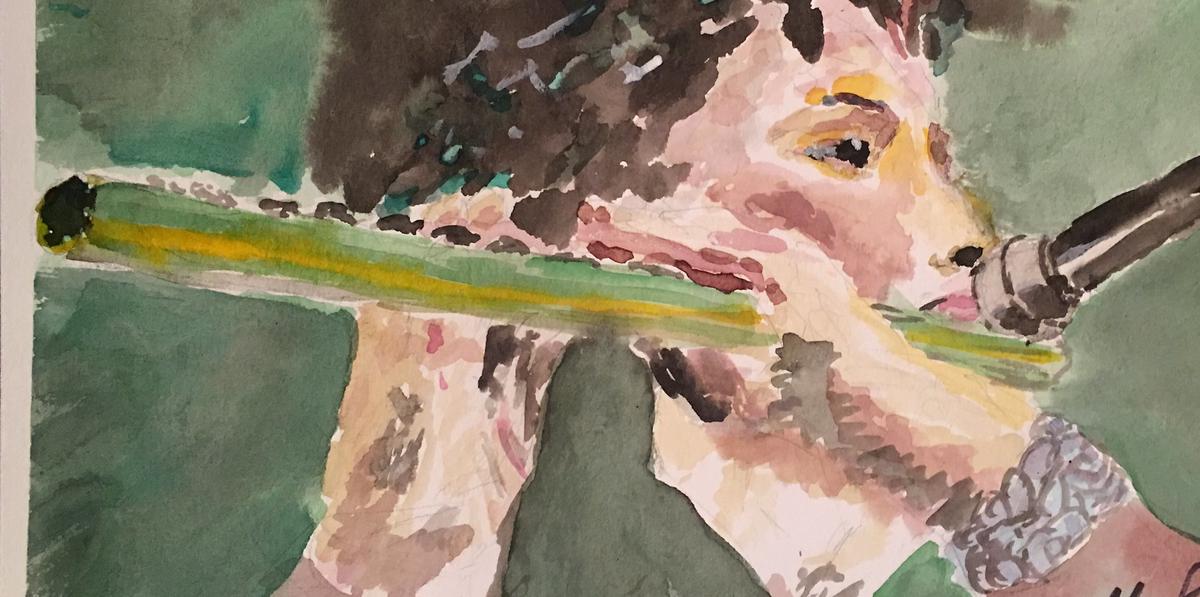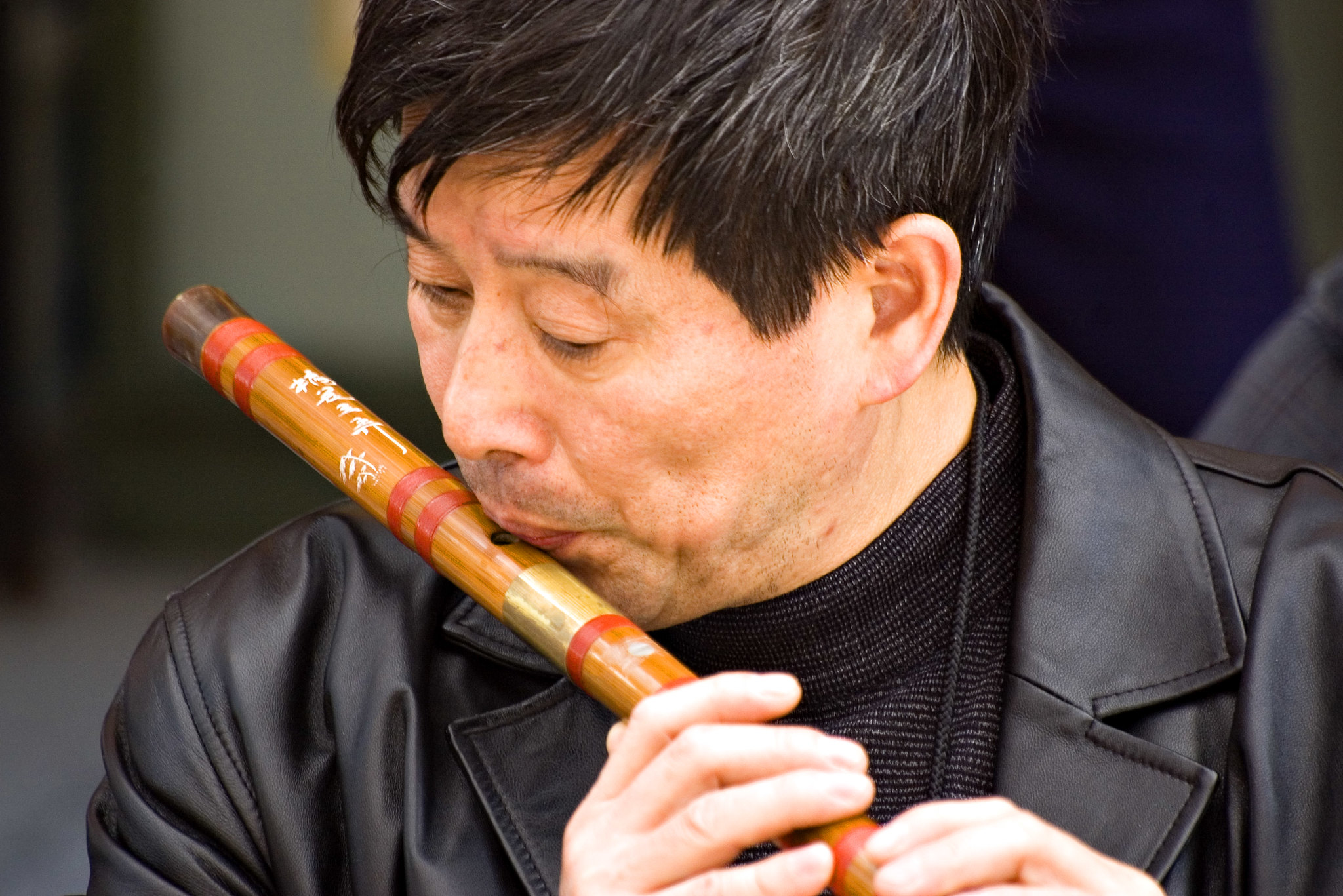The Circular Breathing Flute Technique is elusive for some, a novelty for others, and for some, it is as natural as a C Major scale. Below, I discuss the history of circular breathing, how the technique works (specifically for flutists), and when it is useful for a flutist to know this technique.
History of Circular Breathing
Circular breathing is a technique that allows a wind player to simultaneously inhale air to fill their lungs while exhaling air to continue to sustain a note. When performed successfully, the note is sustained seamlessly.
This technique has been used for centuries in various ways. Often attributed as one of the earliest known uses of circular breathing, thirteenth-century Mongolian metal workers used the technique to continuously blow into tubes to melt gold and silver as they crafted ornaments and other such items.
There are many Eastern instruments that utilize the technique as part of their standard practice. Perhaps the most widely known by western audiences is the Australian Digeridoo, which often uses the technique to sustain its drones for minutes at a time.
Circular breathing has not been a technique required of western orchestral instruments until recently. It is becoming more mainstream as time passes. Jazz musicians particularly are fond of it as it adds a new technique that can be used when improvising.
Circular breathing became somewhat popularized when Kenny G, and American Smooth Jazz Saxophone player, set the world record of the longest-held note on a wind instrument with circular breathing at 45 minutes and 47 seconds (a record that has since been broken several times).
How To Circular Breath
Circular breathing on the flute is often deemed one of the more challenging instruments due to the nature of the way sound is produced.
The steps of circular breathing are as follows:
- Play normally until just before you are about to run out of air.
- Expand your cheeks and allow the remaining air in your lungs to fill the newly created space in your mouth.
- Use pressure and resistance from your cheeks against your embouchure to push the air out at the same speed as when you are playing normally.
- Simultaneously, while your cheeks are pushing air into the instrument, fill your lungs with air by inhaling through your nose.
- Finally, allow air from your lungs to support the airflow again, and play normally.
- Repeat
Sounds simple, right?
The reason this technique is so common on instruments such as the didgeridoo is that the instrument provides a lot of natural resistance, preventing the air stored in the mouth from escaping while your cheeks push the airflow.
On the flute, this resistance does not exist, and it required great control over one's embouchure to ensure air flow continues while breathing in.
Musicians often start practicing the coordination of this technique using a straw in a glass of water. You can blow bubbles through the straw and practice using the resistance of your cheek muscles to keep the bubbles going while you inhale through your nose. This can also be used to practice the transition from using the air stored in your mouth to normal air flow from your lungs. This transition is very similar to how string instruments learn to change the direction of their bow without affecting or pausing the sound.
When Circular Breathing is Useful
It is difficult to know which came first, the repertoire or the adaption of this technique, but modern orchestral repertoire and modern solo repertoire have utilized this technique for professional level musicians. Its adoption among flutists as a "standard" technique is slow, but more and more are adding this skill to their toolbox.
Solo works such as Gergely Ittzés Projections and Ian Clarke The Great Train Race require the performer to know this technique in order to execute a performance of the piece. Orchestral repertoire is full of potential to use this skill (there is a short flute solo in Mahler's First Symphony that would greatly benefit from a bit of circular breathing).
Circular breathing can also give flutists access to play music written for string instruments, instruments which can sustain pitches for a long time.
Conclusion
Circular breathing is still a technique that is not widely taught or expected of flutists, but more and more at the graduate and professional level, this technique is become more the norm than the exception. While it is a bit like patting your head while rubbing your stomach, the coordination can be learned and utilized to tremendous effect in the right moments.




